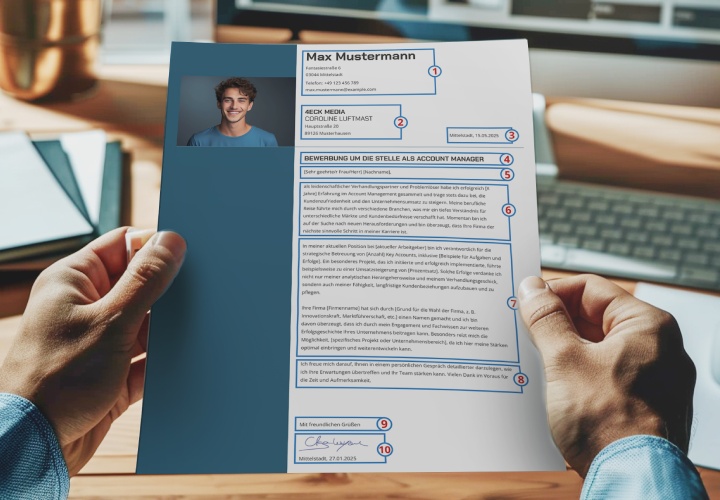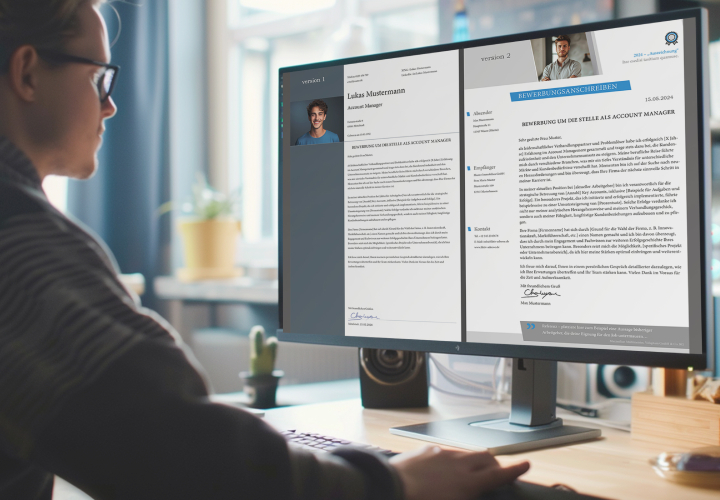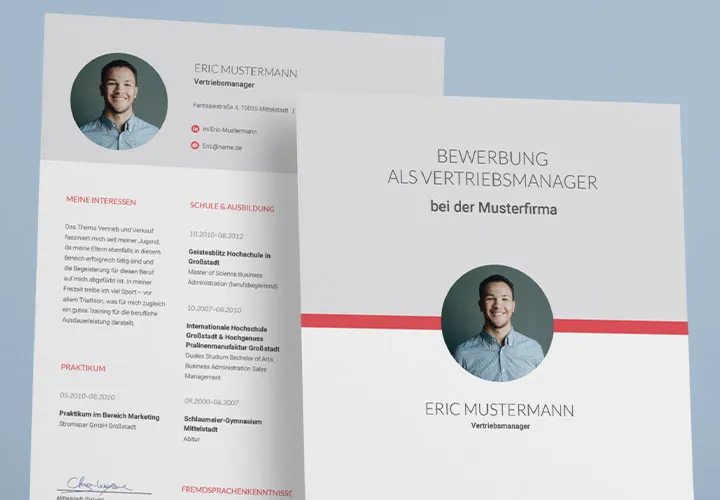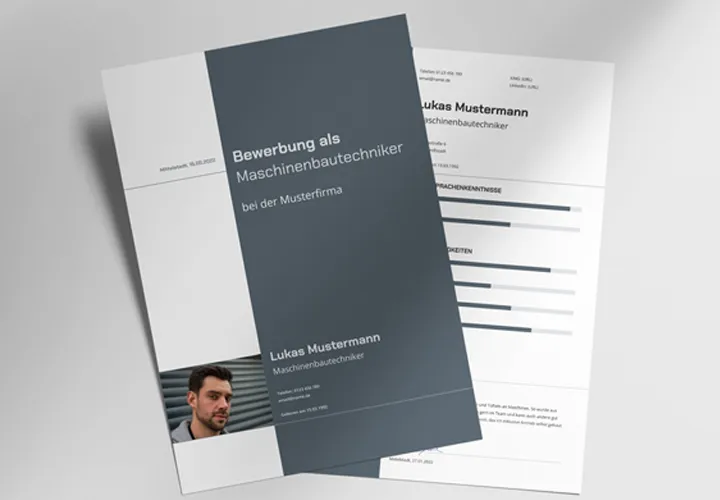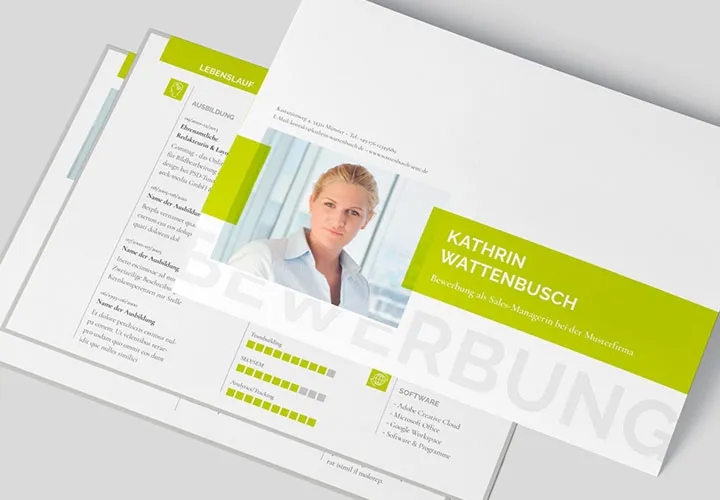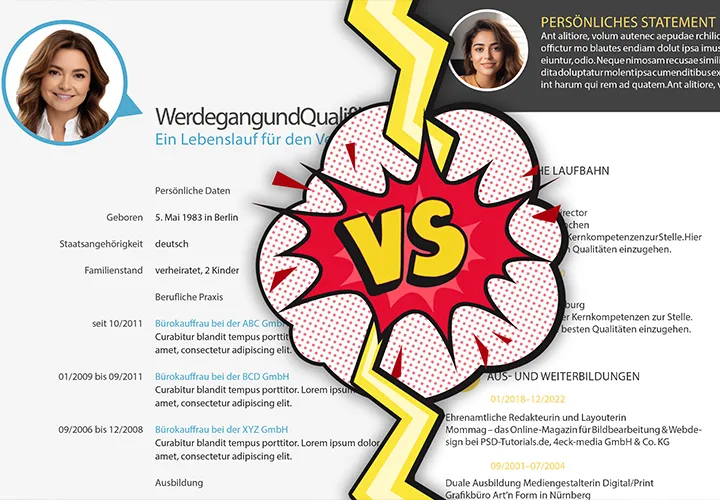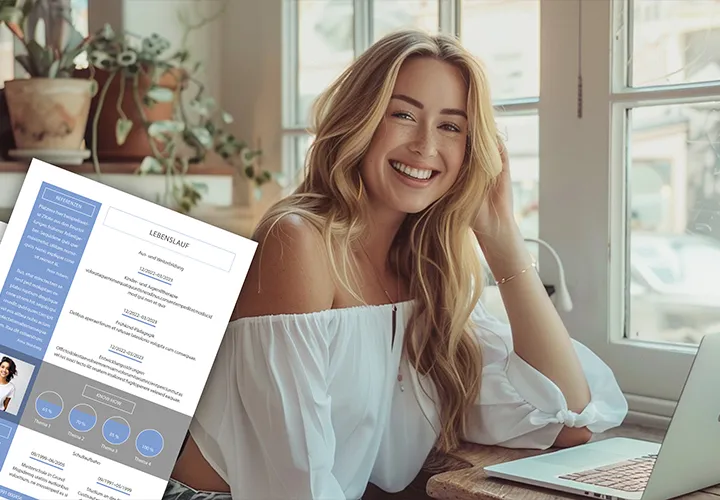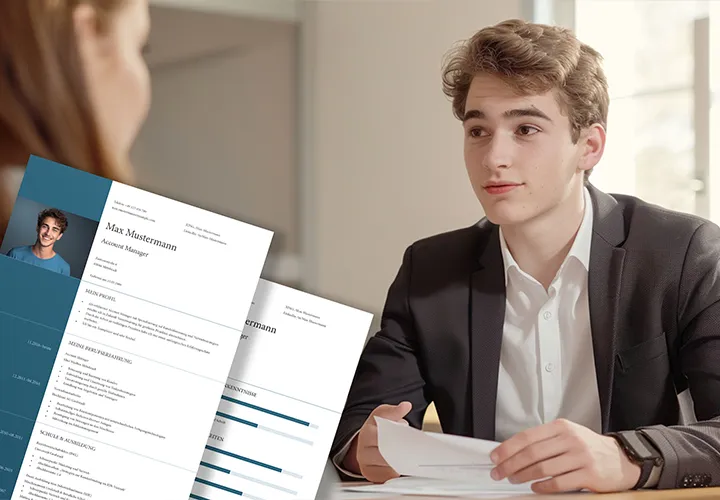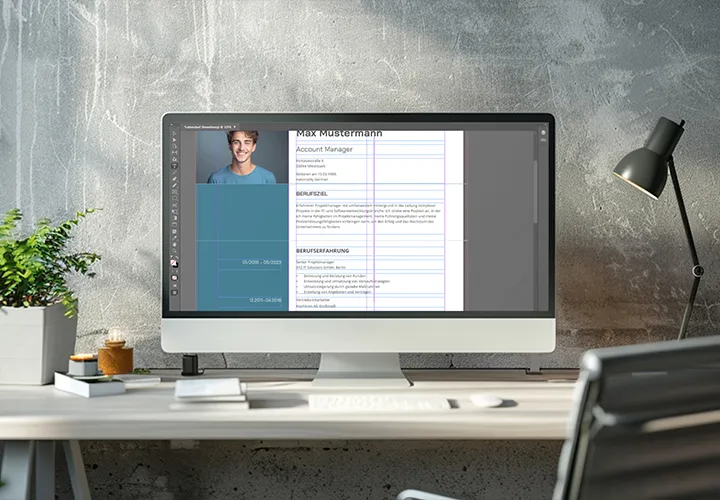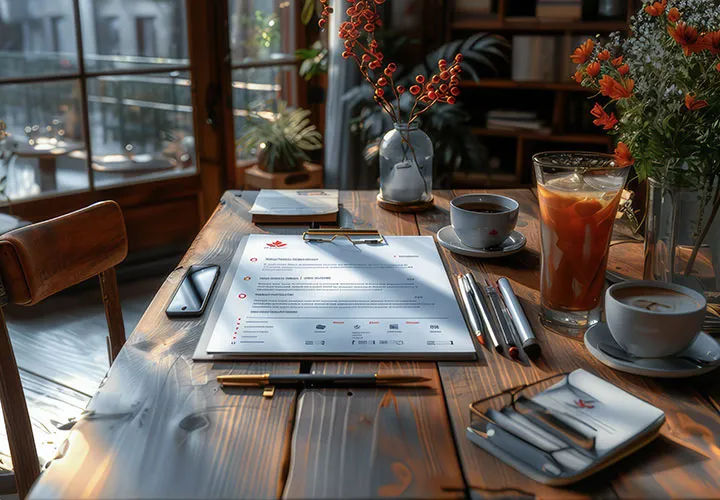Application design & standards
Uncertain about choosing the application design? The articles here will help you find the right design. You will learn about the role of the company's corporate design and how to tailor your application to your profession. Get to know the different types of applications - from classic to modern. In addition, you will find important information about the specific features of German applications and standards. With this knowledge, you will create an application that suits you and your desired employer.
Professional application, professional impression
Application without Comic Sans - thank you!
Application: Design Makes the Difference
The design of your application must fit the company and your profession. Orient yourself on the company's corporate design. Take a close look at the colors and fonts on the company's website. You can subtly incorporate these elements into your application.
Example: Are you applying to a bank with a blue logo? Then you can add small blue accents to your application. This shows attention to detail.
The profession also determines the design:
As a doctor, you should choose a simple, professional design. Clear structures, plenty of white space, and a easily readable font like Arial or Calibri. Your professional competence takes center stage.
As a photographer, you can be more creative. You can choose a modern font and cleverly incorporate your portfolio. The layout can be more striking - but still remain professional. A photo gallery of your best works makes your application interesting.
Remember: The design supports your qualifications. It does not make you a better candidate, but it helps the recruiter to assess you correctly.
Types of Applications
The main distinction lies between classic and modern as well as between tabular and descriptive.
The classic resume relies on subtle colors like dark blue, gray, or anthracite. These muted tones appear serious and professional. It is based on a clear structure with distinct lines. This form is timeless and particularly suitable for traditional industries such as banks, insurance companies, or authorities.
The modern resume allows more creative freedom. Here you can work with colors and use creative layouts. Graphical elements showcase your skills at a glance. This form is well suited for creative professions, start-ups, or media companies.
In the tabular resume, the information is presented in two columns. Time references are on the left, while corresponding activities are on the right. This form makes your career path quickly understandable. HR managers appreciate this clarity.
The descriptive resume tells your story in text form. You can describe your experiences in more detail. This form is rather rare in Germany. It is suitable for special situations, such as when you want to explain a career change.
My tip: Choose the form according to your goal. Are you applying to an advertising agency? Then showcase your creativity. Do you want to work in a bank? It's better to stick to a classic-tabular format.
German Job Application
The German job application differs significantly from applications in other countries. This is what you need to know when applying in Germany.
Unlike the American resume, the German CV includes a job application photo. The photo must be professional - preferably taken by a photographer. German employers expect this.
The length is also different. An American resume is often one page long. The German CV can be two to three pages. You may provide more details here.
German employers place great emphasis on certificates and credentials. Attach copies of your degrees, work certificates, and further training certificates. This is uncommon in the USA.
Another difference: In Germany, you must provide your date of birth, place of birth, and marital status. In the USA, this would even be prohibited - there it is considered a potential source of discrimination.
The cover letter is particularly important in Germany. It must be exactly one page long and refer directly to the job advertisement. Americans often write short cover letters - this is not sufficient in Germany.
German HR managers scrutinize applications very carefully. They pay attention to every detail: layout, spelling, completeness of documents. A good application is your ticket to the interview.
My advice: If you come from another country, have your application checked by a German native speaker. Small cultural differences can make a big difference.
Job Application and DIN 5008
The DIN 5008 is the German standard for the design of business letters. This standard gives you clear rules for your application - especially for the cover letter.
The main specifications of DIN 5008 for your application:
- The sender is on the top left
- The recipient is below
- You write the date to the right
- The subject line remains without "Subject"
- The body text starts 4.5 cm from the top edge
- You use a line spacing of 1.0 to 1.5
- The margins are at least 2.5 cm wide
Is DIN 5008 a law? No. But it is the recognized standard in the German business world. HR managers are familiar with this norm and expect its application.
A tip: Modern application templates sometimes deviate slightly from DIN 5008. That's okay, as long as your application remains professional and clearly structured. The standard gives you a good foundation - you can creatively adapt it.

